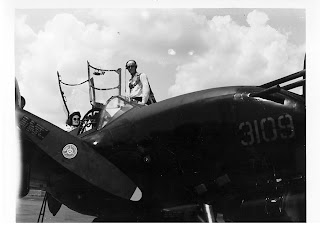He was in battle with
a “mystery aircraft”
as told to
Nick E.
On a crisp
morning in May 1944, tail gunner Bob Ferrara and his crew were flying their
Martin B-26 Marauder when they crossed into enemy territory. Off in the
distance, he spotted an aircraft approaching fast. Bob could tell it wasn’t an
ordinary bomber. The enemy opened fire, the incoming tracers filling the
gunner’s window, but none of them hit the B-26 Marauder.
Bob
grabbed the handles of his machine gun and retaliated. Through the hail of
bullets, he could see there were no propellers on the enemy plane. The mystery
aircraft fired again, spraying bullets at Bob and his B-26 bomber.
Bob zeroed
in and fired, and finally hit the bandit chasing them. The plane erupted into
flames, and plummeted to the ground. Bob and his crew were dazed, and wondered
what aircraft could fly at such high speeds without a visible propulsion
system, and with that much firepower?
The crew
made it back to base for the debriefing and found top brass waiting for them.
Bob was reluctant to admit that he had no idea who was chasing them. He was
given a book of German planes to look through, and as Bob flipped through the
pages, he found a photo of what had been after them.
“This is
it,” he said, “this is the plane I shot down.”
It was a
German Messerschmitt Me 262, one of the first jet aircraft invented and used in
combat.
 |
| 1943 Enlistment Photo |
 |
| B-26 Marauder |
 |
| Bob Ferrara, top row center |






















